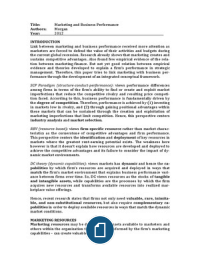2.
Conceptual model/framework
Answer: (CV, CSM, CVD, CVOMIS)
New source for competitive advantage is external - orientation toward customers!
Key idea is to compete on SUPERIOR CUSTOMER VALUE DELIVERY
Customer value and customer satisfaction have a strong relationship.
According to customer's value hierarchy customers are driven by desired
product attributes
(exercising, attribute-based satisfaction),
consequences
( health issues, consequence-based satisfaction)
goals and purposes
(better life, goal-based satisfaction)
Researches argue that there is a difference in what managers think customers value and what customers say they value.
This gaps can be reduced with customer learning processes (informal and formal)
How to learn about customer value?
The CSM process (customer satisfaction measurement) has emerged to bring the voice of customers). With this process companies can identify target group and determine attribute BUT they are missing in-depth understanding (ok, customers are satisfied but WHY!)
Therefore, CVD (customer value determination) is designed to provide managers with answers to critical questions that should guide learning about the consumers.
Like CSM, CVD starts with:
identifying the target customers, value dimensions (what do they want), delivering the value to the target (how well poorly, performance), Why poorly/well on important value dimensions
Future! What are target customers likely to value in the future?
Each department within the company can do independent qualitative research to learn about desired value.
Result? Different views across the organisation!
Solution:
CVOMIS (Customer value-oriented marketing information system) that eliminates the gap by sharing the customer value learning insights.




